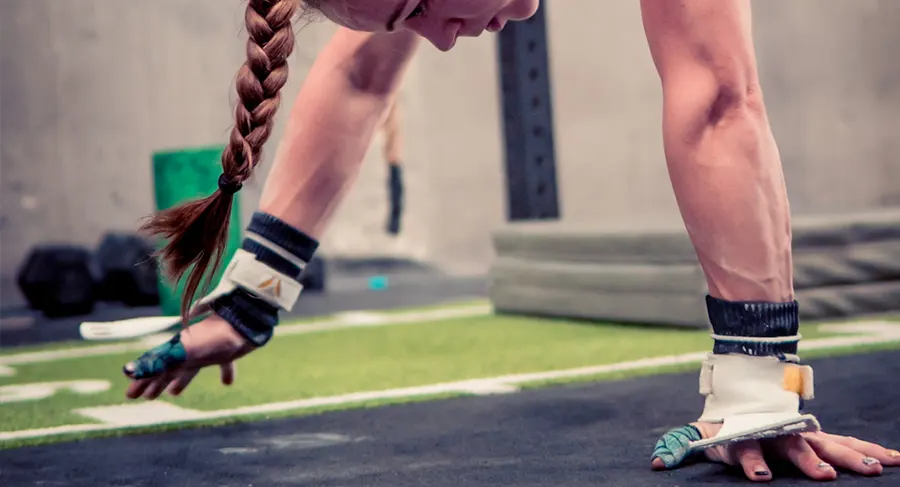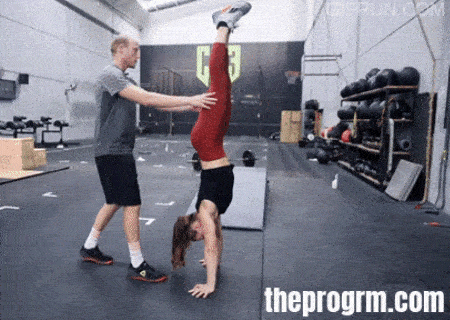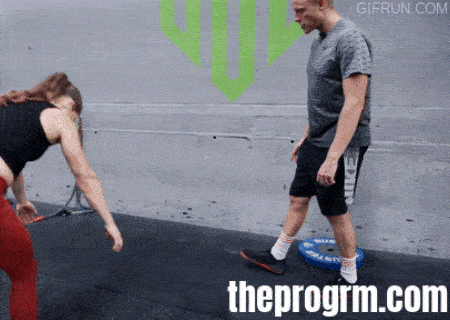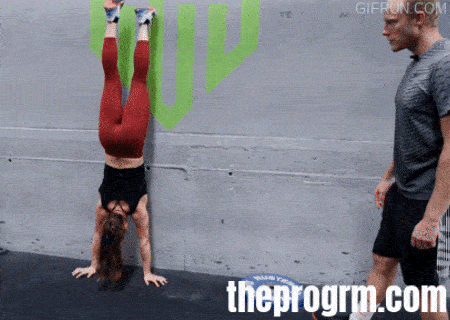Handstand Walk Guide

Learning how to handstand walk is a challenging yet rewarding skill that can take your CrossFit training to the next level.
Even though mastering this skill takes time, patience, and practice. In this article, we will discuss the step-by-step process of learning how to handstand walk, along with tips and drills to help you progress towards this impressive feat.
So, whether you're a beginner or an experienced CrossFit athlete, let's dive in and start learning how to handstand walk.
How long does it take to learn to Handstand walk?
The amount of time it takes to learn how to handstand walk can vary greatly depending on individual factors such as strength, flexibility, coordination, and prior experience with gymnastics or other related skills.
For some individuals, it may take only a few weeks of consistent practice to be able to walk short distances on their hands.
For others, it may take several months or even longer to achieve this skill. With consistent practice and dedication, anyone can learn how to handstand walk, but the timeline for mastering this skill will be unique to each individual.
How do I start to practice Handstand walk?
If you're new to handstand walking, it's important to start with the basics and progress gradually to more advanced variations. Here are some steps to help you get started:

- Develop basic strength and balance: Before attempting handstand walking, it's important to have a solid foundation in handstands and basic gymnastics strength exercises. This can include practicing static handstands against a wall, hollow body holds, wall walks, shoulder taps, and push-ups.
- Practice handstand holds: Once you have developed basic strength, begin practicing handstand holds away from the wall. Start by kicking up into a handstand and holding for a few seconds, gradually increasing the amount of time you can hold.
- Practice walking on your hands: Once you feel comfortable holding a handstand, begin to practice walking on your hands. Start by taking small steps, moving one hand at a time while maintaining balance and control. Gradually increase the distance you can cover, always prioritizing control and form over distance.
- Use a spotter or wall: When first learning to handstand walk, it can be helpful to have a spotter or use a wall for support. A spotter can provide guidance and help to prevent falls, while a wall can provide a reference point and support for your feet.
- Practice regularly: Consistent practice is key to developing handstand walking skills. Aim to practice handstands and handstand walks 2-3 times per week, gradually increasing the duration and intensity of your sessions.
Remember to progress gradually and prioritize safety and proper form over speed or distance. With consistent, intentional practice and dedication, you can develop the skills to become proficient at handstand walking.
For more drills and progressions, check out our full tutorial:
For more tutorials and workouts, subscribe to our Youtube channel.
How often should I practice?
To become proficient at handstand walking, it's important to practice consistently and with intention.
As a general guideline, it's recommended to practice handstand walking at least 2-3 times per week.
However, keep in mind that quality of practice is more important than quantity.
It's better to practice for shorter periods of time with good form and focus, rather than practicing for long periods with poor technique and without focus.
Additionally, it's important to give your body adequate rest and recovery time between practice sessions to prevent injury and allow your muscles time to rebuild and strengthen.
Listen to your body and adjust your practice frequency and duration as needed. As you become for consistent, you can begin practicing under fatigue and incorporating handstand walks into WODs.
Should you bend your knees on handstand walks?
In general, keeping your legs straight during handstand walks can help promote better alignment and balance, as well as engage the muscles of the core, glutes, and legs to help maintain control and stability.
However, for some individuals, keeping the legs straight may put too much strain on the lower back or other joints, or make it more difficult to maintain balance.
Bending the knees (also known as “the scorpion”) during handstand walks can help to shift the center of mass and allow for greater control and balance.
This can be especially helpful when first learning the skill or when performing on uneven surfaces.
Ultimately, the decision to bend the knees during handstand walks is a personal one and may depend on your individual strengths, limitations, and goals.
Experiment with different variations and techniques to find what works best for your body and your goals.
It's also a good idea to work with a coach or trainer who can provide guidance and feedback on proper technique and form.
How can I scale Handstand walks in my workouts?
Scaling handstand walks in CrossFit WODs is important if you're still working on mastering this skill. Here are some scaling options to consider:
Handstand Holds: Instead of attempting a full handstand walk, perform handstand holds against the wall. This helps you to develop the basic strength and stamina requirements that you'll need to eventually do the exercise RX. Holds allow you to work on balance, shoulder strength, and body positioning without the movement element. You can gradually increase the duration of the holds as you progress.
Bear Crawl / Quadruped Crawl: This exercise also promotes shoulder and core strength and stability but with the element of movement. Work up to sets of 20 or 30 meters while maintaining the correct posture.
Wall Walks: This exercise is great for mimicking the stimulus for handstand walk for athletes who have the strength but struggle with balance. When using wall walks as an alternative for HSW, it's especially important to maintain an active, neutral midline while ascending and descending.
Handstand Walk to Wall: Once you've mastered your first few steps, you can use this drill to practice consistency and accumulate volume. Mark 1-5 meters away from a wall to ensure that you're reaching the same target distance in each rep.

Alternatively, you can also begin in a wall-facing handstand and walk away from the wall for and additional challenge:

Little by little, you will be able to walk longer distances without the need of the support wall. You'll eventually be able to scale to prescribed distances in workouts.
Remember that becoming advanced at handstand walking is a gradual process that takes time, patience, and practice.
How do I become advanced at Handstand walk?
Once you have a solid foundation of this exercise, you can start to work on more advanced handstand walking skills:
- Increase distance: Once you can comfortably walk short distances on your hands (3-5 meters), begin to challenge yourself by gradually increasing the distance you can cover. This can be done by marking out a distance and trying to walk further each time, or by practicing on a longer surface.
- Practice on different surfaces: To develop greater control and adaptability, practice handstand walking on a variety of surfaces such as grass, sand, or uneven implements like steps or ramps. This can help to improve your balance and coordination, and prepare you for more advanced skills.
- Incorporate turns and transitions: Once you can walk in a straight line, begin to incorporate turns and transitions into your handstand walking practice. This can include turning 180 degrees, 360 degrees, or transitioning into other skills such as handstand push-ups or pistol squats.
Handstand pirouettes are one of the most recent movements to appear in CrossFit and are becoming standard for quarterfinal and competitive level athletes. If you want to nail the handstand pirouette, check out these tips from former National-level Swiss Gymnast, Marco Schwendiman:
Conclusion
Whether you're new to handstand walking or looking to progress towards more advanced variations, it's important to start with a strong foundation of basic strength and balance, and progress gradually to more challenging skills.
Handstand walking is not only a great way to challenge yourself physically, but it can also help to improve your overall fitness, balance, and body awareness.
So, get started today and enjoy the journey towards mastering this impressive skill!







